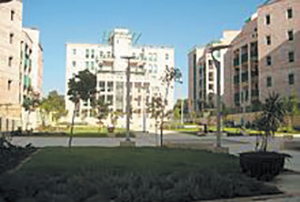
In Israel, just like in the rest of the world, owners of real estate have to pay property taxes, which are used to support city administrative activities such as garbage collection and maintenance of parks and roads.
In Israel, property taxes are called “arnona,” an ancient Greek word which has been in our lexicon for at least 2000 years (see Tractate Pesachim 6a). This term should not be confused with the Jerusalem neighborhood Arnona, which received its name thanks to its great views: on a clear day, one can see the Arnon River in Jordan, which runs into the Dead Sea.
In the United States, property taxes are determined based on the property’s value. In Israel, however, arnona payments are based on the property’s size.
Determining the size of your property
Different cities use different methods to calculate the size of apartments. The computation methods range from the most conservative extreme of only including the apartment’s net usable space, all the way to the most far-reaching extreme of including not only the apartment and balcony space but also the unit’s portion of the common areas, including public stairwells and hallways, parking, storage, roof, garden, and even trash bin areas. (Don’t worry; parking and storage space are taxed at a lower rate.)
Determining the tax rate
After determining your apartment’s taxable size–based on your city’s arnona calculation method–the next step is to determine the arnona rate on a per square meter basis. Each city has a different tax rate, and the rates fluctuate greatly; for example, Beit Shemesh’s tax rate is about half of Jerusalem. Some cities have multiple districts, each with its own tax rate. In addition, some cities have different tax rates based on the size of the apartment. For example, in Jerusalem there is one rate for units below 120 sqm and a higher rate for units that are above 120 sqm.
To make matters even more complicated, in Jerusalem, different building types have different tax rates. For example, the tax rate in a stucco-faced shikun building is lower than in a stone-faced building. One last twist: discounts are available to various demographics, including senior citizens, people with health-related issues or special needs, and indigent families.
Future Changes?
Jerusalem has historically used the most conservative measuring approach of only including net usable space, but there is currently a movement to expand the calculation method to include the apartments’ internal and external walls.
Although this proposal is facing considerable resistance, there is a good chance that this broader calculation method will pass, as it will fill the city’s coffers in multiple ways. First, the average apartment will suddenly grow by about 10%, thus increasing taxes by 10%. In addition, many apartments are currently just below the 120 sqm threshold, and going above 120 sqm will raise the unit’s tax rate by about 20%. So not only will all apartment dwellers have to pay more taxes, but many people will also have to pay a higher tax rate.
Thank you to my chavruta Peretz Silverman, who–when I heard that he was researching his own tax bill–generously agreed to research and co-write this article.
Gedaliah Borvick is the founder of My Israel Home (www.myisraelhome.com), a real estate agency focused on helping people from abroad buy and sell homes in Israel. To sign up for his monthly market updates, you may contact him at gborvick@gmail.com.
By Gedaliah Borvick










